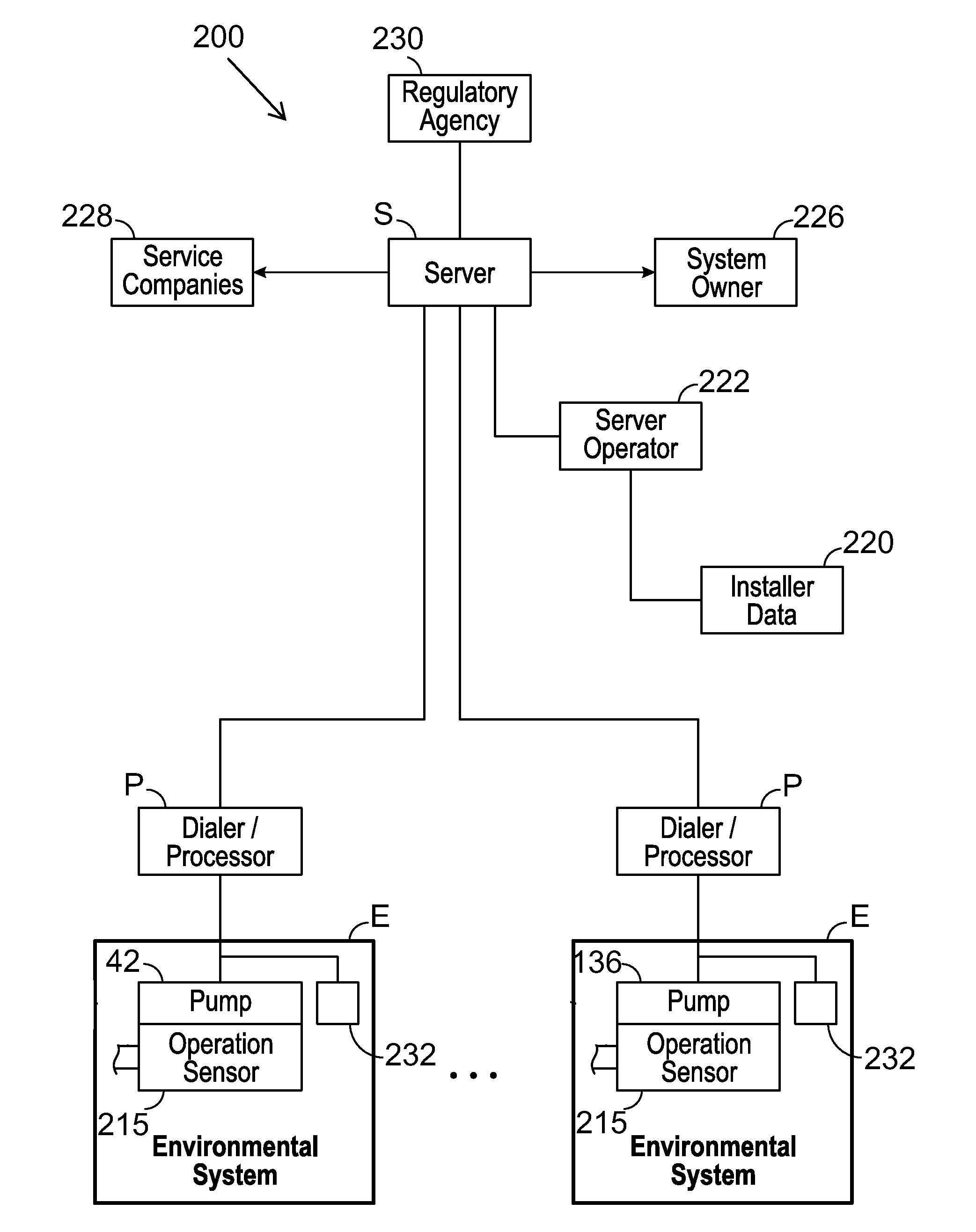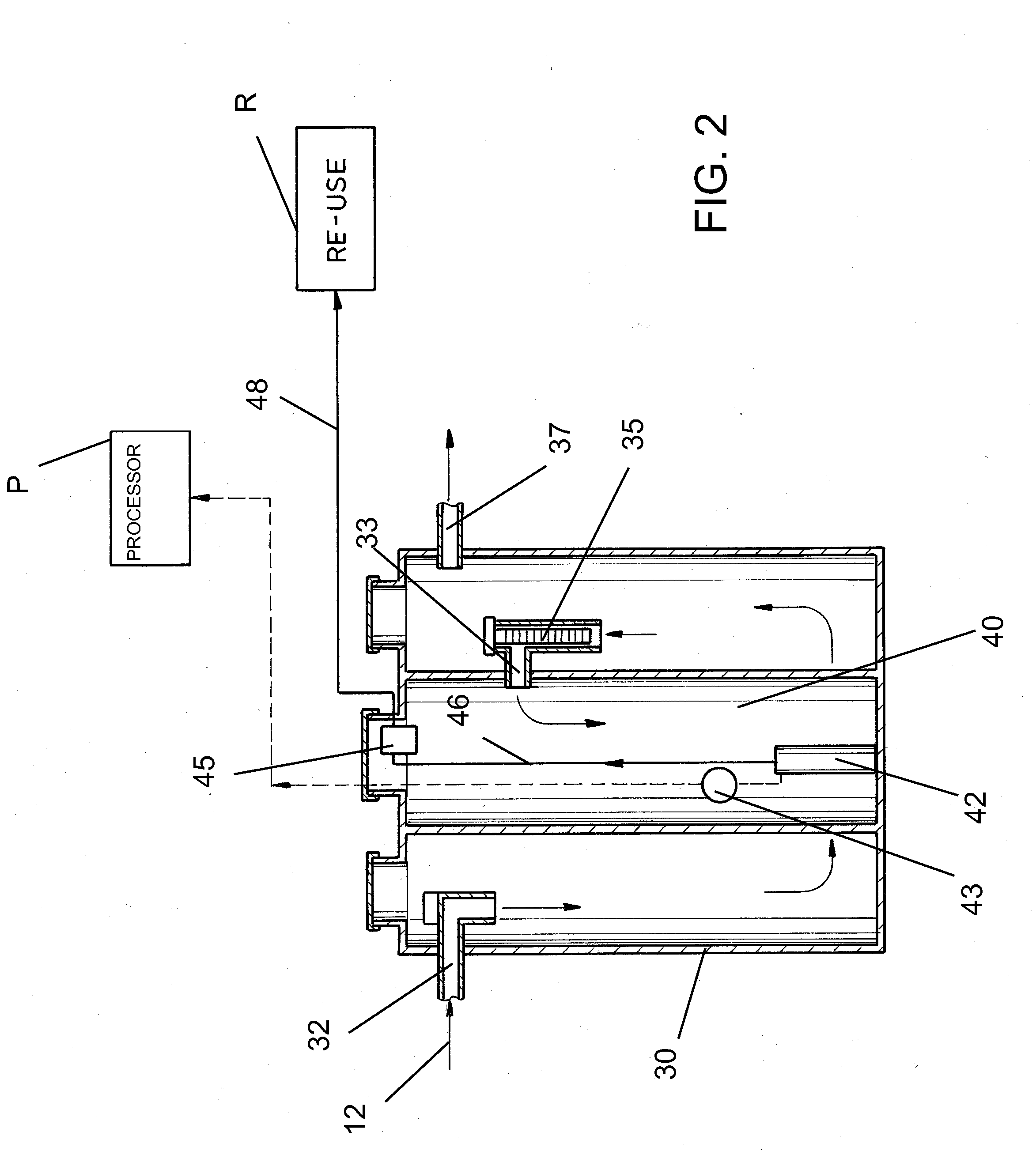Wastewater Use and Monitoring System
a monitoring system and wastewater technology, applied in the direction of positive displacement liquid engines, instruments, computer control, etc., can solve the problems of waste of fresh water, general non-free of residual bacteria, severe environmental problems, etc., and achieve low bacteria count, easy disinfection, and preservation of fresh water
- Summary
- Abstract
- Description
- Claims
- Application Information
AI Technical Summary
Benefits of technology
Problems solved by technology
Method used
Image
Examples
Embodiment Construction
[0035]As used herein the term “solids handling pump” is intended to mean any pump capable of pumping solids whether through openings sufficiently large for the solids to pass or by the use of grinders or the like to break solids down. Accordingly “solids handling pumps” encompass grinder pumps, solids handling pumps, and other pumps well known to those skilled in the art which are capable of pumping solids. The term “septic tank” refers to an on-site subsurface tank and includes anaerobic wastewater treatment. The term “coarse filters” is intended to mean any filter appropriate for use in a wastewater treatment system which filters out solids / particles larger than ⅛ inch. The term “fine filters” is intended to mean any filter appropriate for use in a wastewater treatment system which filters out particles larger than 100 microns. The term “float system” means one or more floats.
[0036]The term “low level switch” refers to any apparatus which detects the level of wastewater and either...
PUM
 Login to View More
Login to View More Abstract
Description
Claims
Application Information
 Login to View More
Login to View More - R&D
- Intellectual Property
- Life Sciences
- Materials
- Tech Scout
- Unparalleled Data Quality
- Higher Quality Content
- 60% Fewer Hallucinations
Browse by: Latest US Patents, China's latest patents, Technical Efficacy Thesaurus, Application Domain, Technology Topic, Popular Technical Reports.
© 2025 PatSnap. All rights reserved.Legal|Privacy policy|Modern Slavery Act Transparency Statement|Sitemap|About US| Contact US: help@patsnap.com



